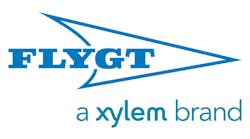Hidden Valley Lake is a lakeside residential development outside of Lawrenceville, Ind., in Dearborn County. Valley Rural Utilities Company (VRUC) acquired the Hidden Lake service area in 1995 from the homeowners’ association that had assumed control of the sewage system from the subdivision’s developer. The private utility serves a total of 1,945 customers in the service area and anticipates projected growth will add another 1,000 connections.
Project background
Recurring pump station failures and inflow and infiltration (I&I) have been among issues at the top of the list of deficiencies in the wastewater collection system serving the development. Floyd Ogden of the VRUC attributes the problems to the system’s age and deterioration, clog-prone pumps, undersized original construction and capacity shortfalls caused by higher-density development than the collection system’s original design, which was for 200 homes.
“We experienced overflows and up to six pump outages a month that cost us at least $250 per incident,” said Ogden. “The failures drew customer complaints and were sapping our budget.
“We qualified for a $13 million federal loan through the USDA Rural Development that underwrites an extensive multiphase improvement program. Among the numerous problems we identified in a preliminary engineering study were that eight of our 12 duplex lift stations had reached the end of their life expectancy. Their replacement became a high priority.”
Replacing the 110-to-660-gpm pump stations was complicated by their locations. Several of them were located 100 ft off the road with steep topography. Intrusions into customer home sites would be a necessity. Completing the replacements as fast as possible while the existing stations remained active further shaped the project management plan.
Solution
TOPs pre-engineered pump stations replaced the existing concrete flat-bottom wet wells. The self-cleaning hopper-shaped bottom helps transport solids and debris to the inlet of the pumps. The results are greater removal of settled and floating solids from the station, eliminating the need for vactor truck calls to clean the station. The Flygt TOPs station was developed in parallel with Flygt nonclog pumps to work seamlessly together.
The N-Pump’s clog resistance is the result of an impeller designed to move axially upwards when encountering most bulky rags, cleaning and personal hygiene wipes and other debris so it passes through smoothly.
The system presented a simple and fast installation for the tandem replacements that were assuming the pumping mission. There was a need to track I&I problems for improved engineering efforts. Ogden decided to track I&I through Flygt’s plug-and-play remote monitoring SCADA system. Ogden can monitor his stations from home in case of emergency.
Following success with the two-part lift station and remote SCADA at one installation, the utility opted to apply the same units at the remaining stations.
Result
The added volume of the TOPs prefabricated wet wells provided the capacity increase to gain the needed efficiency and handle the past growth in connections. Furthermore, the more clog-resistant adaptive N-pumps eliminate built-up material on their impellers that induce drag and compromise energy efficiency.
“Our first station entered service two years ago and has used less than half the electricity of the old pumps,” Ogden said. “Flygt technology was our choice because of past success, ease of operation and cost savings realized with the stations in operation.”



